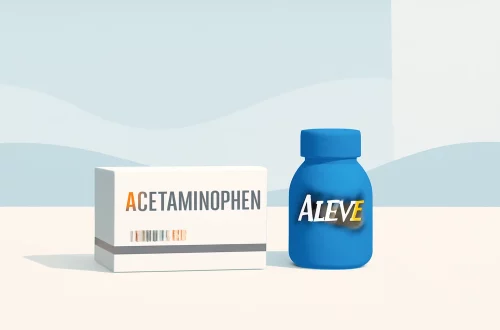
The Best Low Carb Cat Food Options for Healthy Feline Diets
A healthy diet is crucial not only for humans but also for our feline companions. As cat owners, we often strive to provide the best nutrition possible to ensure our pets live long and healthy lives. With an increasing awareness of feline obesity and related health issues, many pet parents are turning towards low-carb diets for their cats. These diets can help maintain an optimal weight, improve energy levels, and even prevent certain health problems associated with excessive carbohydrate intake.
Cats are obligate carnivores, which means their bodies are designed to process protein more efficiently than carbohydrates. While traditional cat food has often been high in grains and fillers, a shift towards low-carb options can better mimic their natural dietary needs. The right low-carb cat food can aid in weight management, promote muscle health, and support overall well-being.
As we explore the various low-carb cat food options available, it’s essential to choose high-quality brands that prioritize animal protein and limit unnecessary fillers. In addition, understanding the nutritional needs of your cat can play a significant role in selecting the best food. With so many options on the market, navigating the landscape of low-carb cat food can feel overwhelming. However, recognizing the key attributes of a good diet can simplify the decision-making process for every cat owner.
Understanding the Importance of Low-Carb Diets for Cats
Low-carb diets have gained significant attention in the realm of pet nutrition, and for good reason. Cats, unlike dogs, have a physiological makeup that favors high protein intake. Their bodies are not designed to handle large amounts of carbohydrates, which can lead to various health issues, including obesity, diabetes, and other metabolic disorders.
When considering a low-carb diet for your cat, it’s vital to understand that felines derive their energy primarily from proteins and fats. A diet high in carbohydrates can lead to spikes in blood sugar levels, which can be particularly problematic for cats prone to diabetes. By focusing on low-carb options, you can help stabilize their energy levels and maintain a healthier weight.
Moreover, a low-carb diet often means fewer fillers and more nutrient-dense ingredients. This not only ensures that your cat receives the necessary nutrients but also enhances their overall well-being. Cats on low-carb diets tend to have more stable energy levels, improved coat condition, and better digestive health.
Being attentive to the ingredients listed on your cat’s food can make a significant difference. Look for high-quality animal proteins, such as chicken, turkey, or fish, as the primary ingredient, and avoid foods that list grains or corn as main components. Additionally, consider the fat content, as healthy fats can provide essential fatty acids that contribute to skin and coat health.
It’s also worth noting that transitioning your cat to a low-carb diet should be done gradually. Sudden dietary changes can upset their digestive system, leading to gastrointestinal issues. Start by mixing the new food with their current diet and slowly increase the proportion of the low-carb option over several days or weeks.
Top Low-Carb Cat Food Brands to Consider
As the market for pet food becomes increasingly diverse, several brands stand out for their commitment to providing high-quality, low-carb options for cats. When selecting the best food for your feline friend, consider brands that prioritize animal protein and limit carbohydrates. Here are some of the top low-carb cat food brands to consider:
1. **Blue Buffalo Wilderness**: Known for its high-protein formulas, Blue Buffalo Wilderness offers grain-free options that are rich in real meat. Their recipes are designed to mimic the natural diet of wild cats, making them an excellent choice for pet owners seeking low-carb solutions.
2. **Wellness CORE**: This brand is dedicated to providing protein-rich, grain-free diets for cats. Wellness CORE is known for its focus on high-quality ingredients and offers numerous recipes that are low in carbohydrates, ensuring your cat receives optimal nutrition.
3. **Instinct by Nature’s Variety**: Instinct is recognized for its raw and freeze-dried options, which are packed with animal protein. Their grain-free recipes are low in carbohydrates and can cater to various dietary needs, including those of picky eaters.
4. **Orijen**: A premium brand that uses fresh, regional ingredients, Orijen offers biologically appropriate diets for cats. Their recipes are designed to replicate the natural feline diet, focusing on high protein and low carbohydrate content.
5. **Tiki Cat**: Tiki Cat specializes in providing high-protein, low-carb wet food options. Their formulas are made with real meat and fish, making them a great choice for hydration and nutrition.
When selecting a brand, always check the ingredient list and nutritional breakdown. It’s essential to choose products that align with your cat’s needs, preferences, and any specific health considerations.
Homemade Low-Carb Cat Food Recipes
For pet owners interested in a more hands-on approach, homemade low-carb cat food can be an excellent alternative to commercial products. Preparing your cat’s meals at home allows you to control the ingredients and ensure that they are getting a balanced diet tailored to their needs. Here are a few simple recipes to consider:
1. **Chicken and Pumpkin Delight**:
– Ingredients: 1 cup of cooked, shredded chicken (no skin or bones), 1/4 cup of canned pumpkin (not the spiced pie filling), and 1/4 cup of chicken broth (low sodium).
– Instructions: Mix the shredded chicken and pumpkin in a bowl. Gradually add the chicken broth until you reach the desired consistency. Serve it fresh or refrigerate for later use.
2. **Salmon and Spinach Medley**:
– Ingredients: 1 can of boneless, skinless salmon, 1 cup of fresh spinach (steamed), and a tablespoon of olive oil.
– Instructions: Combine the salmon and spinach in a bowl, and drizzle with olive oil. Mash it together to create a hearty mixture that your cat will love.
3. **Beef and Vegetable Stew**:
– Ingredients: 1 pound of lean ground beef, 1/2 cup of diced carrots, 1/2 cup of green beans, and 2 cups of water.
– Instructions: Brown the ground beef in a pot, then add the carrots and green beans along with the water. Simmer until the vegetables are tender. Allow to cool before serving.
Homemade cat food can be nutritious and satisfying for your pet. However, it’s crucial to ensure that these meals are balanced. Consult with a veterinarian or a pet nutritionist to make sure your homemade recipes meet your cat’s dietary requirements.
Transitioning Your Cat to a Low-Carb Diet
Transitioning your cat to a low-carb diet can be a straightforward process if done gradually. Cats can be creatures of habit, and sudden changes to their diet may cause digestive upset. Here are some tips for making the transition smoother:
1. **Gradual Introduction**: Start by mixing a small amount of the new low-carb food with your cat’s current food. Gradually increase the proportion of the new food over a week or more, depending on how your cat adjusts.
2. **Monitor Your Cat’s Response**: Keep an eye on your cat’s behavior and digestive health during the transition. Look for signs of discomfort, such as vomiting, diarrhea, or changes in appetite. If any issues arise, slow down the transition process.
3. **Encourage Hydration**: Low-carb diets often include higher protein content, which can lead to increased thirst. Ensure your cat has access to fresh water at all times, and consider incorporating wet food for added moisture.
4. **Celebrate Small Wins**: When your cat successfully adjusts to the new diet, celebrate this achievement. Positive reinforcement can encourage your cat to embrace their new food.
5. **Consult Your Veterinarian**: If you’re unsure about the best approach for transitioning your cat to a low-carb diet or have specific concerns about their health, always consult with your veterinarian. They can provide personalized guidance based on your cat’s individual needs.
Remember that every cat is unique, and what works for one may not work for another. Patience and attentiveness to your cat’s needs will go a long way in ensuring a successful dietary transition.
In conclusion, choosing the right low-carb food for your cat can greatly contribute to their overall health and well-being. Whether you opt for commercial brands or homemade meals, understanding your feline’s dietary needs is essential for making informed decisions.
**Disclaimer**: This article is for informational purposes only and does not constitute medical advice. For any health-related concerns regarding your cat, always consult a veterinarian.




